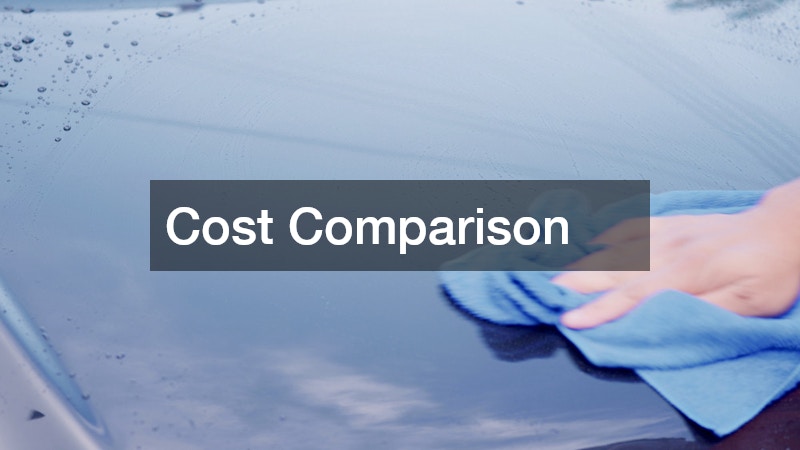Understanding when to opt for auto glass repair or replacement can save you time and money while ensuring your safety on the road. This article will guide you through the process of making an informed decision. Whether you’ve experienced a minor chip or a significant crack, knowing the appropriate solution is vital.
Determining If You Need Auto Glass Repair
Assessing the Damage
Examine the size, location, and type of damage to the auto glass. Minor chips or cracks under six inches can often be repaired without compromising the integrity of the glass.
However, chips directly in the driver’s line of sight or those that interfere with vehicle sensors might require a more comprehensive evaluation.
The location of the damage is a crucial factor in determining the appropriate action. While edge cracks are prone to spreading and may warrant replacement, central cracks might be controlled through repair. Advanced technologies now allow for effective repair techniques that preserve windshield strength and appearance.
The type of damage also affects whether repair is feasible. Star breaks and bulls-eye chips can often be repaired, while long or multiple cracks might prompt a replacement. Experts emphasize the importance of addressing damage promptly to prevent further complications.
Considering Repair Costs and Benefits
Evaluate the cost-effectiveness of repair versus replacement based on your insurance policy and out-of-pocket expenses. Repair is generally less expensive than replacement, especially when insurance companies cover repairs with zero deductible in most cases. By choosing repair, you not only save money but also preserve the original factory seal of the windshield.
It’s essential to consider the environmental benefit of opting for repair over replacement. Repairing minimizes waste, as manufacturing new windshields consumes resources and energy. Additionally, repair processes often require less time, allowing you to return to your daily routine more quickly.
Another key aspect is the preservation of resale value. A vehicle with a factory-installed windshield often holds more value than one with a replacement. As a result, when feasible, repair should be the first choice for minor damages.
When Windshield Replacement Is Necessary
Safety Concerns
Understand the scenarios where windshield replacement is crucial for vehicle safety. If a crack obstructs the driver’s view, replacement becomes imperative. Large, sprawling cracks can undermine the windshield’s structural integrity, posing risks to the occupants in case of an accident.
Safety is also compromised when chips grow into larger cracks due to temperature changes or vibration from driving. A replaced windshield guarantees the restoration of the vehicle’s original safety standards. Advanced Driver-Assistance Systems (ADAS) calibration is often necessary after replacement to ensure sensors and cameras function correctly.
Furthermore, regulatory compliance plays a role in determining the need for replacement. In many regions, driving with a significantly damaged windshield is illegal, underscoring the necessity for timely action. Safety regulations enforce this to protect not just the driver but everyone on the road.
Extent of Damage
Learn about the damage criteria that necessitate complete windshield replacement. Damage that penetrates both layers of the laminated glass or cracks that extend to the edges are indicators for replacement. Moreover, if the damaged area exceeds the size of a dollar bill, replacement is generally advised.
The extent of damage can also be assessed based on fracture complexity. Multiple intersecting cracks weaken the structural integrity, making replacement the safest option. Recent studies show that 10% of windshields with ignored damages eventually require replacement due to worsening over time.
Visibility impairment is another factor that dictates replacement necessity. Even small damages within the driver’s field of vision can refract light, causing significant visual distortion. To ensure optimal visibility and road safety, replacing the windshield may be required.
The Differences in Costs and Insurance Coverage
Insurance Coverage Options
Analyze how different insurance plans cover auto glass repair and replacement. Comprehensive auto insurance often includes glass coverage, which can substantially reduce out-of-pocket expenses for both repair and replacement. However, it’s crucial to verify with your provider, as policies vary in terms of coverage and deductibles.
Some insurers offer coverage plans that fully sponsor repairs, encouraging vehicle owners to address damage swiftly. This approach reduces long-term costs by preventing minor chips from escalating into larger problems. It also reflects the insurers’ trust in repair efficacy, prompting a preference for repair where possible.
In contrast, replacement coverage might involve higher deductibles, influencing the decision to repair when feasible. Discussing options with your insurer can offer clarity and financial relief. Understanding your insurance policy thoroughly ensures preparedness and avoids unforeseen expenses.
Cost Comparison
Compare the typical costs of repair versus replacement and factors influencing the price. Windshield repair, often priced between $50 to $100, is substantially cheaper than replacement costs, which can range from $200 to $500 or more. Factors such as vehicle make, model, and location contribute to price variations.
The complexity of the damage can further influence costs, with intricate repairs sometimes demanding higher charges. Technological advancements in repair techniques have made it possible to address complex damages effectively while still keeping costs reasonable. Competition among service providers also affects pricing, enabling consumers to find affordable, quality service.
Making the right choice between auto glass repair and replacement involves assessing damage, safety considerations, and cost factors. Proper evaluation can maximize safety and financial benefits. By understanding your needs and your vehicle’s requirements, you ensure not only a safer driving experience but also a practical approach to maintaining your vehicle’s value.

